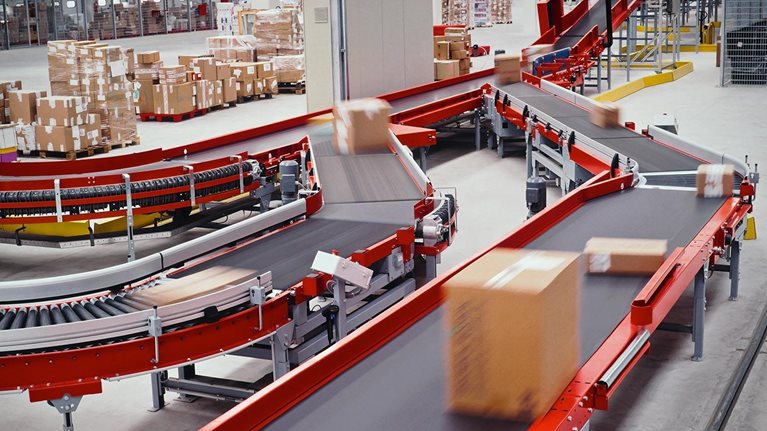The past few years have witnessed a surge of interest in the Internet of Things (IoT)—the network of connected “smart” devices that communicate seamlessly over the Internet. Although much media attention has focused on consumer products, some of the most exciting IoT innovations have occurred within the business sector, where the combination of sensor data and sophisticated analytical algorithms has allowed companies to streamline business processes, increase productivity, and develop leading-edge products.
As with any nascent sector, however, IoT faces much uncertainty related to regulatory developments, customer demand, and technological advances. For enterprise IoT, many questions also remain about its utility and impact, since most companies are still in the early stages of implementation. To date, they have only achieved modest, incremental benefits from their enterprise IoT programs. With limited evidence of bottom-line impact, executives are cautious about increasing their enterprise IoT investments, and few have embarked on large-scale initiatives designed to transform their operations or enable new products and services.
This situation may soon change, however. We recently began surveying business leaders about enterprise IoT adoption, including the challenges that are preventing them from undertaking more extensive efforts. In this article, we present preliminary findings from the fifty respondents that have provided information to date. We will later analyze and present further findings from about 300 additional respondents (see sidebar, “Our survey methodology”). The results for the first respondents allowed us to identify some directional trends that suggest that enterprise IoT is poised for strong growth because of its ability to improve the customer experience, increase productivity, and enable the development of innovative products and services.
Enterprise IoT is gaining momentum
Although enterprise IoT is a relatively new development, 98 percent of survey respondents reported that most companies within their industry include enterprise IoT initiatives in their strategic road maps, including those related to improving service operations, increasing visibility into operations, enabling new business models, and creating new product and service offerings (Exhibit 1).1 Examples of these new programs in these areas abound. For instance, an elevator company is creating a suite of IoT-enabled services to improve the reliability of its products and decrease downtime. In addition to lowering operating costs for the company’s customers, these applications could potentially transform its business model.

Would you like to learn more about how we help clients understand the Internet of Things?
Our survey respondents had a favorable view of enterprise IoT’s increased importance, with 92 percent stating that it would have a positive impact over the next three years, either by improving operations or by allowing companies to develop new products with embedded IoT capabilities. The latter development could eventually translate into higher revenues. Equally important, 62 percent of respondents stated that enterprise IoT’s impact will either be very high or transformative. That means it could produce many more benefits than the modest improvements seen to date. Respondents also noted that top executives recognized IoT’s potential value, with 48 percent reporting that company leaders either strongly supported or were directly engaged in IoT initiatives.
Enterprise IoT could produce the greatest benefits in manufacturing and service operations
Enterprise IoT can help improve multiple functions. When asked which department would benefit most, 40 percent of survey respondents cited service operations and 30 percent chose manufacturing, making them the clear leaders (Exhibit 2). For service operations, respondents believed that enterprise IoT would produce the most value in three areas: diagnostics and prognostics, predictive maintenance, and monitoring and inspection. In manufacturing, the top use cases were resource and process optimization (for instance, improving yield, throughput, or energy consumption), asset utilization, and quality management.

Challenges persist in enterprise IoT
Despite these encouraging findings, our survey uncovered some reasons for concern—particularly with respect to how companies are using IoT data. Respondents agreed that information from IoT sensors was valuable, with 60 percent stating that it provides significant insights, such as data on customer demographics or shopping patterns. But an almost equal number—54 percent—claimed that companies used 10 percent or less of this information. These findings are consistent with the evidence we have seen in the field. At one gas rig, for instance, managers only used 1 percent of data from the ship’s 30,000 sensors when making decisions about maintenance planning.
Our survey also uncovered serious capability gaps that could limit enterprise IoT’s potential. Some of these related to the sensor data discussed above, with survey respondents reporting that businesses often struggle with data extraction, management, and analysis (Exhibit 3). But there were also significant capability problems in other areas. For instance, 70 percent of respondents stated that companies have not yet integrated IoT solutions into their existing business work flows—in other words, they are not using enterprise IoT to optimize day-to-day tasks. Respondents also noted that companies had difficulty identifying use cases for enterprise IoT applications and conducting end-to-end prototyping for connected products.


What’s new with the Internet of Things?
Addressing these capability gaps may be challenging because companies often concentrate on piloting a single enterprise IoT program. With such a narrow focus, they do not consider the big picture, including the organizational capabilities and change-management programs required for the rollout of large-scale initiatives. This problem may become less intense as more business leaders begin recognizing enterprise IoT’s value and place more emphasis on capability building. We are also optimistic that more companies will make a greater effort to incorporate enterprise IoT into their daily operations as its benefits become clearer. A few have already reported strong gains by moving in this direction. For example, Boeing workers now use IoT wearables and augmented-reality tools on wiring-harness assembly lines, which has resulted in up to 25 percent improvement in productivity.
Our preliminary survey findings give reason to be optimistic about enterprise IoT’s growth. Respondents clearly believe in its power and companies are demonstrating their support through greater investment in IoT initiatives. With this shift, enterprise IoT may soon deliver far more transformational change than the incremental improvements seen to date, particularly with respect to increased productivity, an improved customer experience, and the creation of innovative products. To build on the momentum, executives must give enterprise IoT more prominence during capability-building programs and when planning work flows—two fairly basic steps that they now tend to overlook. Such efforts will help enterprise IoT take root and become a tool for transformative change—and that is what we hope to see as the sample size grows in our survey.


